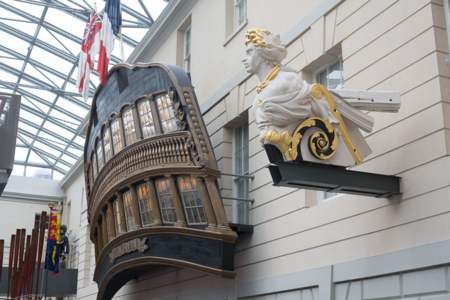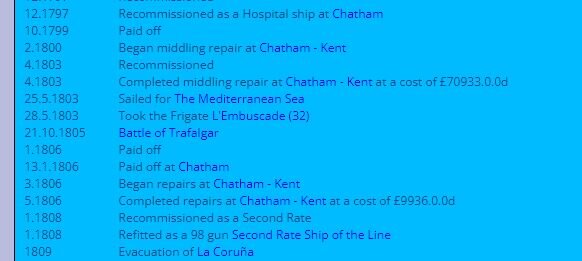The stern of the HMS Victory was changed during her great repair which was finished in 1803.
Reconstruction
On her return to England,
Victory was examined for seaworthiness and found to have significant weaknesses in her stern timbers. She was declared unfit for active service and left anchored off
Chatham Dockyard. In December 1798 she was ordered to be converted to a
hospital ship to hold wounded French and Spanish
prisoners of war.
However, on 8 October 1799,
HMS Impregnable was lost off
Chichester, having run aground on her way back to
Portsmouth after escorting a convoy to
Lisbon. She could not be refloated and so was stripped and dismantled. Now short of a three-decked ship of the line, the
Admiralty decided to recondition
Victory. Work started in 1800, but as it proceeded, an increasing number of defects were found and the repairs developed into a very extensive reconstruction. The original estimate was £23,500, but the final cost was £70,933. Extra gun ports were added, taking her from 100 guns to 104, and her
magazine lined with copper.
The open galleries along her stern were removed; her
figurehead was replaced along with her
masts and the paint scheme changed from red to the black and yellow seen today. Her gun ports were originally yellow to match the hull, but later repainted black, giving a pattern later called the
"Nelson chequer", which was adopted by most Royal Navy ships in the decade following the Battle of Trafalgar. The work was completed in April 1803, and the ship left for Portsmouth the following month under her new captain,
Samuel Sutton.

en.wikipedia.org
British First Rate ship of the line 'Victory' (1765). Dates of service, name changes, previous and next incarnations, dimensions, armament, commanders, officers and crewmen, actions, battles, sources
threedecks.org
Means, that all battles the Victory fought before she had open galleries.
and Trafalgar was the only battle she had the new closed stern

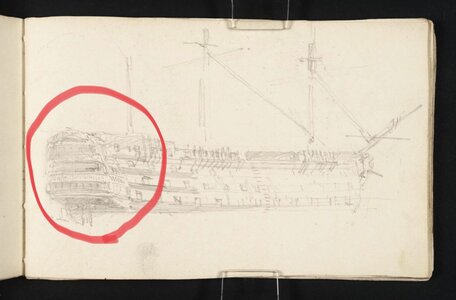
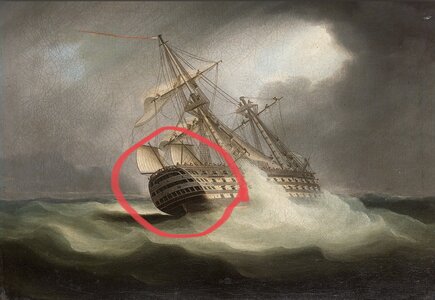
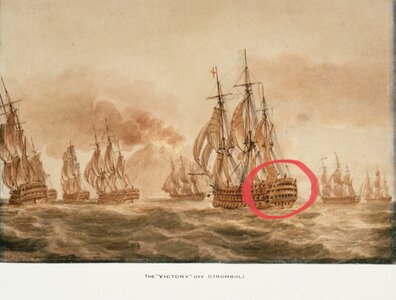
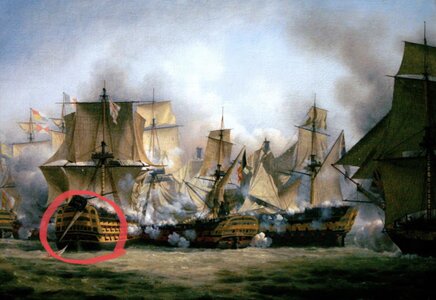
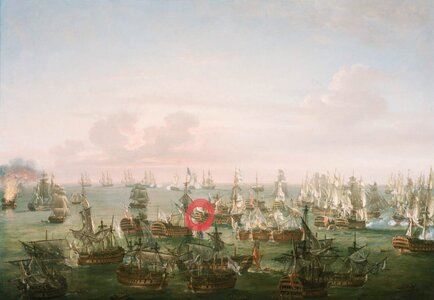
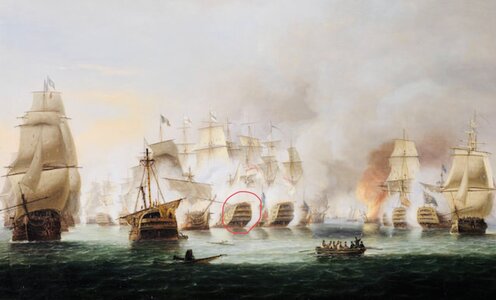
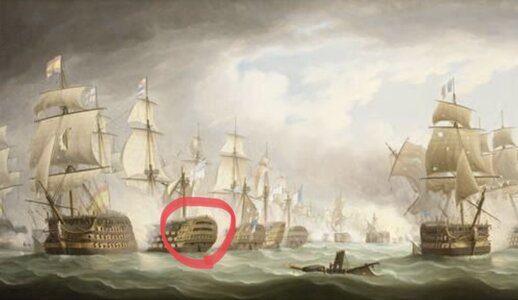
 This one if from after the battle and depicts a open stern gallery
This one if from after the battle and depicts a open stern gallery 1808 this one was made I think, It’s a painting of victory after trafalgar
1808 this one was made I think, It’s a painting of victory after trafalgar






 This one if from after the battle and depicts a open stern gallery
This one if from after the battle and depicts a open stern gallery 1808 this one was made I think, It’s a painting of victory after trafalgar
1808 this one was made I think, It’s a painting of victory after trafalgar




